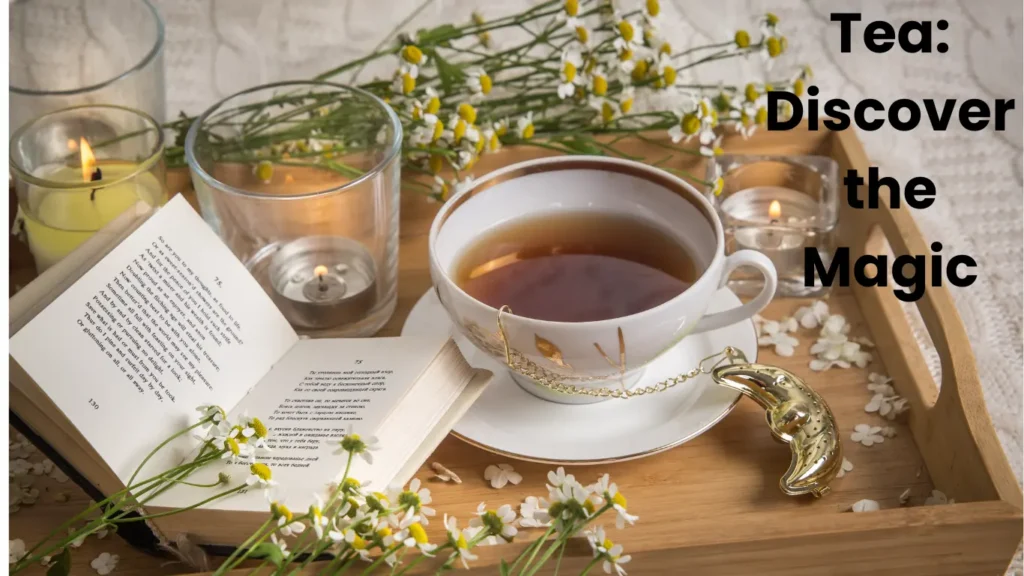Tea, a beverage cherished by millions across the globe, is more than just a drink; it’s a tradition, a ritual, and for many, a comforting part of daily life. Its origins are steeped in ancient history, its varieties as diverse as the cultures that embrace it. In this blog, we’ll explore the fascinating world , delving into its introduction, different types, importance, benefits, and potential drawbacks.
Introduction
Its origins trace back to ancient China, where legend has it that Emperor Shen Nong discovered it in 2737 BCE when leaves from a wild tree drifted into his pot of boiling water. Intrigued by the pleasant aroma, he took a sip and found the brew refreshing and invigorating. From these humble beginnings, it gradually spread to other parts of Asia and eventually around the world.
It is derived from the leaves of the Camellia sinensis plant, which thrives in various climates and conditions, leading to the development of numerous varieties. Each type has its unique characteristics, influenced by factors such as the region where it is grown, the time of harvest, and the processing methods used.

Different Types
The world is rich and varied, with several major types that offer distinct flavors, aromas, and experiences:
Green Tea: Made from unoxidized leaves, It is one of the least processed types, preserving its natural antioxidants and polyphenols. It is known for its fresh, light taste and is often associated with health benefits such as improved brain function and fat loss.
Black Tea: In contrast to green tea, black tea is fully oxidized, resulting in a dark color and robust flavor. It is commonly consumed with milk and sugar and is the base for popular blends like Earl Grey and English Breakfast. It is rich in theaflavins and thearubigins, compounds linked to heart health.
Oolong Tea: It falls somewhere between green and black tea in terms of oxidation. This partial oxidation gives oolong its unique, complex flavor profile, which can range from fruity and floral to earthy and rich.
White Tea: The least processed of all , It is made from young leaves and buds that are simply dried. Its delicate, subtle flavor is complemented by a high concentration of antioxidants, making it a great choice for boosting the immune system and maintaining skin health.
Herbal Tea: Technically not true , as it doesn’t come from the Camellia sinensis plant, it is made from a variety of herbs, flowers, and fruits. Include chamomile, peppermint, and rooibos. Each offers unique benefits, such as calming effects, improved digestion, and anti-inflammatory properties.
Pu-erh Tea: A fermented tea from China, pu-erh is known for its deep, earthy flavor and is often aged for several years. It is believed to aid in weight loss, lower cholesterol levels, and improve cardiovascular health.
Importance
It holds significant cultural, social, and economic importance worldwide:
Cultural Significance: Tea ceremonies in countries like Japan and China are intricate rituals that reflect deep cultural traditions and philosophies. British afternoon tea is a quintessential social event, emphasizing relaxation and conversation.
Social Bonding: Sharing a cup can foster connections and create moments of relaxation and reflection. It’s a gesture of hospitality and friendship in many cultures.
Economic Impact: It is a major agricultural product, providing livelihoods for millions of people globally. The industry plays a vital role in the economies of countries like India, China, Sri Lanka, and Kenya.
Benefits
It is renowned for its numerous health benefits, which vary depending on the type.
Antioxidant Properties: It is rich in antioxidants, such as catechins in green tea and theaflavins in black tea, which help protect the body from oxidative stress and reduce the risk of chronic diseases.
Heart Health: Regular consumption, particularly green and black tea, has been linked to lower cholesterol levels, reduced blood pressure, and improved cardiovascular health.
Weight Management: Like green tea and oolong tea, can boost metabolism and aid in weight loss by increasing fat oxidation and improving digestion.
Mental Alertness: The moderate caffeine content in it, along with the amino acid L-theanine, can enhance mental alertness, focus, and cognitive function without the jitters often associated with coffee.
Digestive Health: Herbal teas such as peppermint and ginger are known for their soothing effects on the digestive system, helping to alleviate symptoms of indigestion and nausea.
Immune Support: White tea and herbal teas like chamomile and echinacea can strengthen the immune system, thanks to their high levels of antioxidants and anti-inflammatory properties.
Disadvantages
While it offers many benefits, there are potential drawbacks to be mindful of:
Caffeine Content: Although lower than coffee, the caffeine can still cause issues for those sensitive to it, leading to insomnia, anxiety, and increased heart rate.
Iron Absorption: Compounds called tannins in it can inhibit the absorption of non-heme iron (the type found in plant-based foods), which may be a concern for individuals with iron deficiency or anemia.
Tooth Staining: Regular consumption of black tea can lead to staining of the teeth over time, similar to the effects of coffee and red wine.
Additives and Sweeteners: Some commercial products, especially bottled iced teas, contain added sugars and artificial ingredients that can negate the health benefits and contribute to weight gain and other health issues.
Pesticide Residue: Non-organic teas may contain pesticide residues, which can be harmful if consumed in large quantities. Opting for organic can help minimize this risk.
Conclusion
with its rich history and diverse varieties, remains a beloved beverage around the world. Its importance spans cultural traditions, social interactions, and economic contributions.
The health benefits are numerous, from antioxidant properties to improved heart health and mental alertness. However, it’s essential to be aware of potential drawbacks such as caffeine sensitivity and the impact on iron absorption.
Whether you enjoy a calming cup of chamomile before bed, a refreshing glass of iced green tea on a hot day, or a robust black tea with breakfast, offers something for everyone. Embracing the world can lead to a healthier, more balanced lifestyle, filled with moments of tranquility and connection. So, brew yourself a cup, savor the flavors, and join the centuries-old tradition of drinking.
What is tea?
It is a beverage made from the leaves of the Camellia sinensis plant. It has been consumed for centuries and comes in various types, each with unique flavors and health benefits.
What are the health benefits of drinking tea?
It offers numerous health benefits, including improved heart health, weight management, enhanced mental alertness, better digestion, and immune support. Each type has specific benefits due to its unique composition.
Are there any disadvantages to drinking tea?
While It has many benefits, it also has potential drawbacks such as caffeine content, which can cause insomnia and anxiety in sensitive individuals. Tannins in it can inhibit iron absorption, and regular consumption of black tea can lead to tooth staining.
Can tea help with weight loss?
Certain types, particularly green tea and oolong tea, can aid in weight loss by boosting metabolism and increasing fat oxidation. However, it should be part of a balanced diet and healthy lifestyle for the best results.
Does tea contain caffeine?
Yes, most it contain caffeine, although the amount varies. Black tea has the highest caffeine content, followed by oolong, green, and white teas. Herbal teas typically do not contain caffeine.
Can pregnant women drink tea?
Pregnant women can drink but should be mindful of caffeine intake. Herbal teas like chamomile and ginger are often recommended, but it’s essential to consult a healthcare provider to ensure safety.
What is the best way to brew tea?
The best way to brew it depends on the type. Generally, use fresh, filtered water and steep for the recommended time at the appropriate temperature. Green and white teas require lower temperatures and shorter steeping times, while black and oolong teas need higher temperatures and longer steeping times.
What are some popular tea blends?
Popular blends include Earl Grey (black tea with bergamot), English Breakfast (a blend of robust black teas), and chai (a spiced tea blend). Herbal blends like chamomile lavender and peppermint ginger are also popular.





[…] tranquility and clarity can seem like an impossible feat. However, meditation and mindfulness offer powerful tools to achieve just that. By understanding these practices and incorporating them into your daily […]